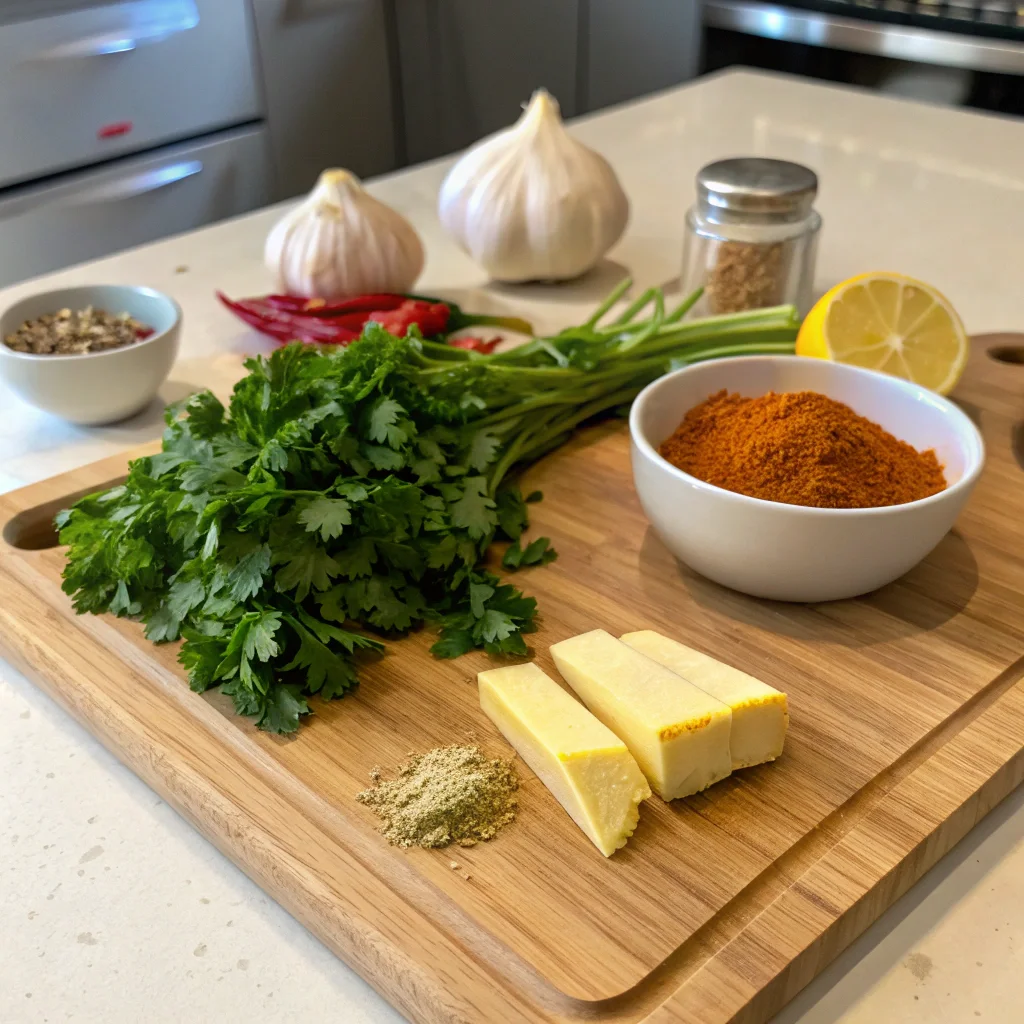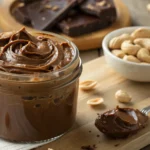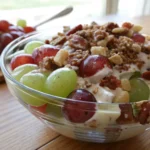Imagine taking your favorite grilled meats and vegetables to the next level with a rich, savory flavor that’s easy to achieve. That’s where cowboy butter seasoning comes in – a versatile blend that can add depth and complexity to any dish. With its ease of use and versatility in various recipes, it’s no wonder that chefs and home cooks alike are turning to cowboy butter seasoning to add a boost to their cooking. Whether you’re looking to try a new cowboy butter recipe or simply want to elevate your current dishes, this seasoning is a game-changer.
Cowboy butter seasoning is a simple yet powerful way to transform your meals, and it’s perfect for anyone looking to add a little excitement to their cooking routine. By incorporating cowboy butter seasoning into your recipes, you can create delicious, restaurant-quality dishes that are sure to impress. So why not give it a try and experience the benefits of cowboy butter seasoning for yourself?
Table of Contents
The Magic Behind Cowboy Butter Seasoning
Cowboy butter seasoning has become a staple in many kitchens, and its popularity can be attributed to its unique flavor and versatility. To understand the magic behind this seasoning, it’s essential to explore its origins and key ingredients. Learning how to make cowboy butter is an art that requires the right blend of herbs, spices, and other components. The best cowboy butter seasoning is a result of careful selection and combination of these ingredients.
The history of cowboy butter seasoning dates back to the early days of American cuisine, where cooks would experiment with different herbs and spices to create a distinct flavor. Over time, this seasoning has evolved, and its popularity has spread across the globe. Chefs love cowboy butter seasoning for its ease of use and ability to add a professional touch to dishes. Whether you’re grilling meats or vegetables, this seasoning is a perfect addition to elevate the flavor.
Origins of Cowboy Butter
The origins of cowboy butter seasoning can be traced back to the American West, where cowboys would use a blend of herbs and spices to flavor their food. This blend was passed down through generations, and its popularity grew as people began to appreciate its unique flavor.
Key Ingredients That Make It Special
The key ingredients that make cowboy butter seasoning special include a combination of herbs, spices, and other components. Some of the essential ingredients include garlic, onion, paprika, and thyme. These ingredients are carefully selected and blended to create a distinct flavor that is both savory and slightly sweet.
These ingredients are carefully selected and blended to create a distinct flavor that is both savory and slightly sweet. If you enjoy experimenting with flavors, check out this Beef Stew Seasoning Recipe.
Why Chefs Love This Blend
Chefs love cowboy butter seasoning for its versatility and ease of use. It can be used to flavor a variety of dishes, from grilled meats to vegetables. The seasoning is also easy to make, and the ingredients can be adjusted to suit individual tastes. Whether you’re a professional chef or a home cook, learning how to make cowboy butter is a valuable skill that can elevate your cooking to the next level.
Transform Your Grilled Meats into Restaurant-Quality Dishes
To elevate your grilled meats, consider using cowboy butter ingredients to add a rich, savory flavor. By incorporating these ingredients into your homemade cowboy butter recipe, you can create a delicious and aromatic seasoning that complements a variety of grilled meats.
Some popular types of grilled meats that pair well with cowboy butter seasoning include smoked dishes, like this Smoked Meatloaf Recipe.
- Steak: ribeye, sirloin, and filet mignon
- Chicken: breasts, thighs, and wings
- Pork: chops, tenderloin, and ribs
When using cowboy butter ingredients to make your homemade cowboy butter, be sure to apply the seasoning liberally to your grilled meats before cooking. This will help to lock in moisture and flavor, resulting in a tender and juicy final product.
Here’s a simple table to illustrate the benefits of using cowboy butter ingredients in your grilled meats:
| Meat Type | Cowboy Butter Seasoning Benefits |
|---|---|
| Steak | Enhanced flavor and tenderness |
| Chicken | Moisture retention and crispy skin |
| Pork | Rich, savory flavor and tender texture |
By following these tips and using cowboy butter ingredients to make your homemade cowboy butter, you can transform your grilled meats into restaurant-quality dishes that are sure to impress your friends and family.
Essential Ingredients for Perfect Cowboy Butter Seasoning
To create the perfect savory cowboy butter or spicy cowboy butter, it’s crucial to understand the essential ingredients involved. The blend of flavors in cowboy butter seasoning is what sets it apart, making it a staple in many kitchens. When it comes to crafting this seasoning, the quality of ingredients is paramount.
A good cowboy butter seasoning starts with fresh herbs and aromatics. Parsley, garlic, and onion are common ingredients that add depth and freshness to the blend. The choice of butter is also vital; using high-quality, salted butter enhances the flavor profile of the seasoning. For those looking to add a bit of heat, spicy cowboy butter can be achieved by incorporating spices like paprika, cayenne pepper, and black pepper.

Fresh Herbs and Aromatics
- Parsley: adds a fresh, green flavor
- Garlic: contributes a pungent, savory taste
- Onion: adds a sweet, caramelized flavor
Butter Selection Tips
When selecting butter for your cowboy butter seasoning, consider the following:
- Choose high-quality, salted butter for the best flavor
- Avoid using low-fat or margarine, as they can affect the texture and taste
Spice Components
The spice components are what give savory cowboy butter or spicy cowboy butter their unique flavor. By balancing the right amount of spices, you can create a blend that complements any dish. Whether you’re looking for a subtle flavor or a bold kick, the key is in the quality and combination of ingredients.
Versatility in Every Sprinkle: From Steaks to Vegetables
Cowboy butter seasoning is a versatile blend that can elevate a wide range of dishes, from steaks to vegetables. With its unique combination of herbs and spices, it’s perfect for adding flavor to various meat preparations, seafood applications, and vegetarian options. Whether you’re a fan of cowboy butter seasoning or looking to try a new cowboy butter recipe, this blend is sure to become a staple in your kitchen.
When it comes to meat preparations, cowboy butter seasoning is a great addition to steak, chicken, and pork. It adds a rich, savory flavor that complements the natural taste of the meat. For seafood applications, try pairing it with shrimp, salmon, or other types of fish for a delicious and flavorful dish. Vegetarian options are also plentiful, as cowboy butter seasoning can be used to add flavor to vegetables, tofu, and other plant-based ingredients.
Meat Preparations
- Steak: rub with cowboy butter seasoning before grilling or pan-frying
- Chicken: mix with cowboy butter seasoning and herbs for a flavorful marinade
- Pork: sprinkle with cowboy butter seasoning before roasting or grilling
Seafood Applications
- Shrimp: toss with cowboy butter seasoning and lemon juice for a quick and easy dish
- Salmon: top with cowboy butter seasoning and herbs before baking or grilling
Vegetarian Options
- Vegetables: toss with cowboy butter seasoning and olive oil for a flavorful side dish
- Tofu: marinate in a mixture of cowboy butter seasoning and soy sauce for a protein-packed dish
With its versatility and rich flavor, cowboy butter seasoning is a great addition to any meal. Try experimenting with different cowboy butter recipes to find your favorite ways to use this delicious blend.
| Ingredient | Quantity |
|---|---|
| Cowboy butter seasoning | 2 tbsp |
| Butter | 1 tbsp |
| Herbs (optional) | 1 tsp |
Storage Tips and Shelf Life Management
To keep your cowboy butter seasoning fresh and extend its shelf life, it’s essential to store it properly. When you learn how to make cowboy butter, you’ll want to ensure that your ingredients remain fresh. The best cowboy butter seasoning is one that is made with high-quality ingredients and stored in an airtight container.
Here are some tips for storing cowboy butter seasoning:
- Keep it in an airtight container: This will help to prevent moisture and air from getting in and spoiling the seasoning.
- Freeze it: Freezing is a great way to extend the shelf life of cowboy butter seasoning. Simply place the seasoning in an airtight container or freezer bag and store it in the freezer.
- Refrigerate it: If you don’t have space in your freezer, you can also store cowboy butter seasoning in the refrigerator. This will help to keep it fresh for a longer period.
When you make your own cowboy butter seasoning, you have control over the ingredients and the freshness of the seasoning. This is one of the benefits of learning how to make cowboy butter. By using the best cowboy butter seasoning and storing it properly, you can enjoy delicious and flavorful dishes all year round.
| Storage Method | Shelf Life |
|---|---|
| Airtight container | 6 months |
| Freezer | 1 year |
| Refrigerator | 3 months |
By following these storage tips and using the best cowboy butter seasoning, you can enjoy delicious and flavorful dishes all year round. Whether you’re making cowboy butter from scratch or using a store-bought blend, proper storage is key to maintaining its flavor and aroma.
Health Benefits and Nutritional Considerations
When it comes to using spicy cowboy butter or savory cowboy butter in your cooking, it’s essential to consider the health benefits and nutritional implications. Both types of cowboy butter seasoning offer a unique blend of herbs and spices that can enhance the flavor of your dishes while providing potential health benefits.
A key aspect of using cowboy butter seasoning is its caloric content. While it can add flavor to your meals, it’s crucial to use it in moderation to avoid excessive calorie intake. A serving size of cowboy butter seasoning is typically small, and it’s recommended to use it sparingly to balance out the flavors in your dishes.
Caloric Content and Portions
To give you a better idea, here’s a breakdown of the approximate caloric content of cowboy butter seasoning:
| Type of Cowboy Butter | Calories per Serving |
|---|---|
| Spicy Cowboy Butter | 5-7 calories |
| Savory Cowboy Butter | 3-5 calories |
Dietary Adaptations
For those with specific dietary needs, cowboy butter seasoning can be adapted to suit various requirements. For example, you can use low-sodium or low-fat versions of cowboy butter seasoning to accommodate your dietary needs. Additionally, you can experiment with different ingredients to create your own unique flavor profiles that cater to your taste preferences.
By being mindful of the caloric content and using cowboy butter seasoning in moderation, you can enjoy the health benefits and flavor enhancements it provides while maintaining a balanced diet. Whether you prefer spicy cowboy butter or savory cowboy butter, there’s a way to incorporate it into your cooking while prioritizing your nutritional well-being.
Pairing Suggestions and Meal Planning
When it comes to using cowboy butter seasoning, the possibilities are endless. One of the most popular ways to use it is as a cowboy butter rub for grilled meats, adding a rich and savory flavor to your dishes. You can also use it as a cowboy butter sauce to add a burst of flavor to your soups, stews, and casseroles.
To get the most out of your cowboy butter seasoning, try pairing it with different types of meats, such as steak, chicken, or fish. You can also use it to add flavor to your vegetables, such as asparagus or Brussels sprouts. Here are some meal planning ideas to get you started:
- Grilled steak with a cowboy butter rub and roasted vegetables
- Chicken soup with a spoonful of cowboy butter sauce
- Roasted vegetables with a drizzle of cowboy butter sauce
In addition to using cowboy butter seasoning as a rub or sauce, you can also use it as a finishing touch to add a burst of flavor to your dishes just before serving. Try sprinkling it over your soups, stews, or casseroles for an extra boost of flavor.
| Meal Idea | Cowboy Butter Seasoning Usage |
|---|---|
| Grilled Steak | Cowboy butter rub |
| Chicken Soup | Cowboy butter sauce |
| Roasted Vegetables | Cowboy butter sauce |
With these pairing suggestions and meal planning ideas, you can take your dishes to the next level with cowboy butter seasoning. Whether you use it as a rub, sauce, or finishing touch, you’ll be sure to add a rich and savory flavor to your meals.
Conclusion: Elevating Your Culinary Experience with Cowboy Butter
As we conclude this journey through the wonders of cowboy butter seasoning, it’s clear that this versatile blend has the power to truly elevate your culinary experiences. From the rich, complex flavors that it infuses into your grilled meats to the effortless way it can transform even the simplest of vegetables, cowboy butter has proven itself to be a must-have in any home chef’s arsenal.
Whether you’re a seasoned grill master or just starting to explore the world of flavorful seasonings, cowboy butter offers a simple yet impactful way to add depth and excitement to your dishes. Its blend of fresh herbs, aromatic spices, and high-quality butter creates a flavor profile that is both robust and well-balanced, making it a versatile choice for a wide range of recipes.
Kinder’s Cowboy Butter Seasoning: Everything You Need to Know
What is Kinder’s Cowboy Butter Seasoning Used For?
Kinder’s Cowboy Butter Seasoning is a versatile blend designed to elevate the flavor of meats, vegetables, and dips. Its buttery richness, combined with herbs and spices, makes it ideal for:
- Grilling: Use it as a dry rub for steak, chicken, or pork.
- Roasting: Sprinkle it on veggies for a flavorful kick.
- Sauces and Dips: Mix it into melted butter or sour cream to create a delicious dipping sauce.
- Seafood: Enhance shrimp, salmon, or scallops with its zesty, buttery notes.
- Everyday Cooking: Add it to scrambled eggs, mashed potatoes, or even popcorn for a gourmet twist.
Why is it Called Cowboy Butter?
The term “Cowboy Butter” evokes the rugged, bold flavors that reflect the spirit of hearty, outdoor cooking. The seasoning draws inspiration from the rich, buttery sauces that were popular in cowboy-style cuisine, often used to enhance grilled meats and open-fire meals. The name also suggests a sense of adventure and rustic charm, aligning with its ability to transform simple dishes into robust, flavorful creations.
What Does Kinder’s Cowboy Butter Taste Like?
Kinder’s Cowboy Butter offers a unique flavor profile that combines:
- Buttery richness: The seasoning has a creamy, velvety base.
- Herbal freshness: Notes of parsley and chives add a subtle brightness.
- Tangy zest: Lemon accents deliver a fresh, citrusy kick.
- Mild heat: A touch of cayenne or paprika provides a gentle warmth without overwhelming the palate.
The result is a well-balanced mix of savory, tangy, and slightly spicy flavors that enhance a wide variety of dishes.
What is Similar to Kinder’s Cowboy Butter Seasoning?
If you’re looking for alternatives to Kinder’s Cowboy Butter Seasoning, here are some options:
- Kinder’s Buttery Steakhouse Seasoning:
- Similar buttery base but with a focus on steak-specific flavors.
- Garlic Herb Butter Blends:
- These blends share a buttery and garlicky profile.
- Compound Butter:
- Homemade or store-bought compound butter with similar ingredients like garlic, herbs, and lemon zest.
- Ranch Seasoning Mixes:
- Offers a creamy and herbaceous flavor, though less buttery.
- Lemon Pepper Seasoning:
- Delivers a zesty citrus punch with a milder buttery note.
While these options may not perfectly replicate Cowboy Butter, they provide similar flavor profiles for creative cooking.
What Can I Use Kinder’s Buttery Steakhouse On?
Kinder’s Buttery Steakhouse is another popular seasoning that works wonders on:
- Steaks and Burgers: Rub it on beef cuts or mix it into ground beef for patties.
- Poultry: Sprinkle it on chicken wings, thighs, or turkey before roasting or grilling.
- Vegetables: Use it on roasted asparagus, baked potatoes, or sautéed greens.
- Seafood: Enhance grilled fish or shrimp with its rich flavor.
- Pasta and Rice: Add a pinch to creamy pasta sauces or rice pilaf for an indulgent touch.
Its buttery and savory notes make it a versatile choice for any meal.
What is the Difference Between Butter and Compound Butter?
Butter and compound butter differ in their preparation and usage:
- Butter:
- Made from churned cream, plain butter has a neutral, creamy taste.
- Typically used as a cooking fat or spread.
- Contains no added flavors or ingredients.
- Compound Butter:
- A flavored butter that combines herbs, spices, citrus zest, or other ingredients.
- Often used as a finishing touch for dishes, such as spreading over grilled steak or vegetables.
- Adds both richness and complexity to recipes.
Compound butter is essentially butter with a twist, designed to elevate your meals effortlessly.






